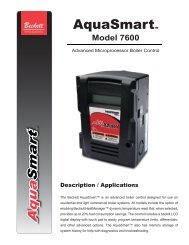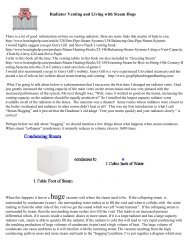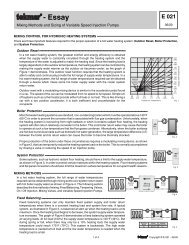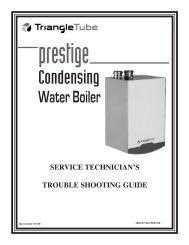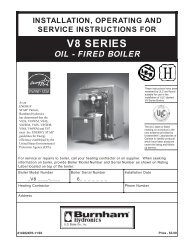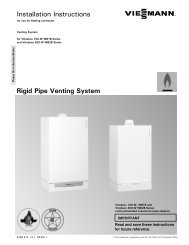Steam Locomotive Firebox Explosion on the Gettysburg Railroad ...
Steam Locomotive Firebox Explosion on the Gettysburg Railroad ...
Steam Locomotive Firebox Explosion on the Gettysburg Railroad ...
You also want an ePaper? Increase the reach of your titles
YUMPU automatically turns print PDFs into web optimized ePapers that Google loves.
water glass had to be completely<br />
open. Partially opened valves resulted<br />
in <strong>the</strong> water glass showing a<br />
water level that was higher than <strong>the</strong><br />
actual water level in <strong>the</strong> boiler. The<br />
crownsheets became overheated,<br />
and explosi<strong>on</strong>s occurred. Those<br />
locomotives, like <strong>the</strong> accident<br />
locomotive, had <strong>on</strong>e water glass<br />
and <strong>on</strong>e set of gage cocks.<br />
Boiler- Water Supply System-The<br />
investigators also examined <strong>the</strong><br />
devices used to supply water to <strong>the</strong><br />
boiler. Two types of water-supply<br />
s ystems are used <strong>on</strong> steam<br />
locomotives: <strong>the</strong> injector system<br />
and <strong>the</strong> feed-water system. Most<br />
steam locomotives have both systems,<br />
but older steam locomotives<br />
may have two injector systems instead.<br />
<str<strong>on</strong>g>Locomotive</str<strong>on</strong>g> 1278 had both<br />
systems. The injector and feedwater<br />
systems can be used<br />
separately or toge<strong>the</strong>r and can act<br />
as backups for each o<strong>the</strong>r; however,<br />
<strong>the</strong> injector system functi<strong>on</strong>s<br />
more efficiently when <strong>the</strong> locomotive<br />
is standing, while <strong>the</strong> feedwater<br />
system functi<strong>on</strong>s more efficiently<br />
when <strong>the</strong> locomotive is<br />
valves at <strong>the</strong> top or bottom of <strong>the</strong> water glass<br />
are not completely open, <strong>the</strong> result again<br />
may be a falsely high water-level indicati<strong>on</strong>.<br />
According to a leading mechanical engineer<br />
and recognized boiler expert with ABB<br />
Combusti<strong>on</strong> Engineering, several crownsheet<br />
failures occurred in England during<br />
World War II because <strong>the</strong> water-glass spindle<br />
valves were <strong>on</strong>ly partially open. The<br />
English crews of U.S. Army 2-8-O locomotives<br />
were unaware that <strong>the</strong> top valve of <strong>the</strong><br />
The boiler-water supply system c<strong>on</strong>sists<br />
of (in order of flow) treated or untreated<br />
water from <strong>the</strong> tender, strainers in <strong>the</strong> tender<br />
and delivery hose, <strong>the</strong> feed-water heater (if<br />
<strong>the</strong> locomotive has <strong>on</strong>e), <strong>the</strong> feed pump or<br />
<strong>the</strong> injector(s) with <strong>the</strong>ir respective check<br />
valves to prevent pressure backup, and two<br />
stop valves to shut off leaking check valves.<br />
The injector pumps unheated water<br />
directly from <strong>the</strong> tender into <strong>the</strong> boiler,<br />
heating it in <strong>the</strong> process. The feed pump<br />
29



